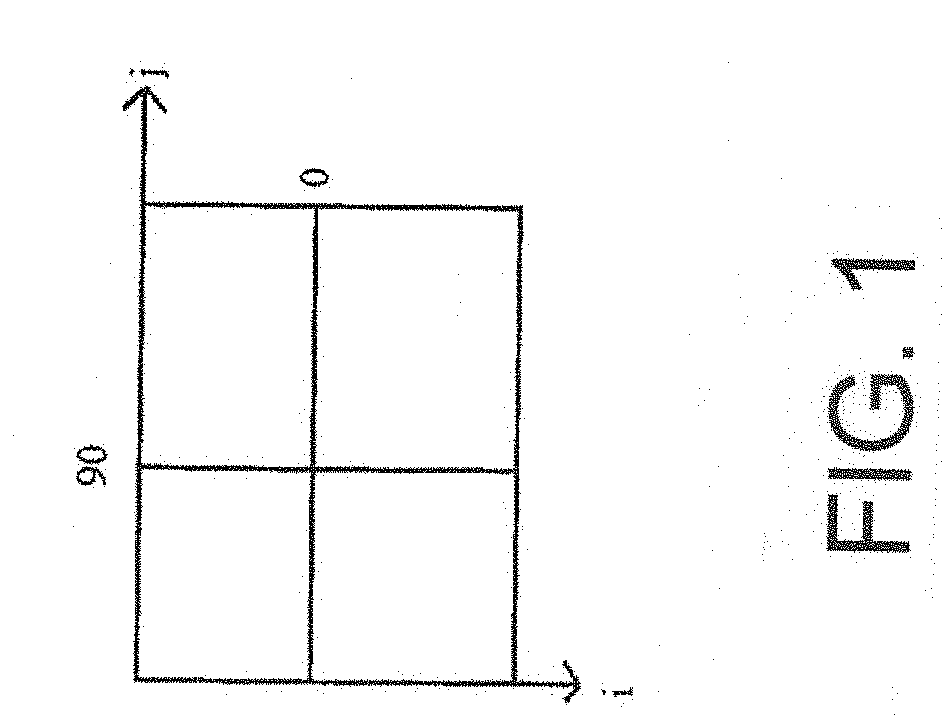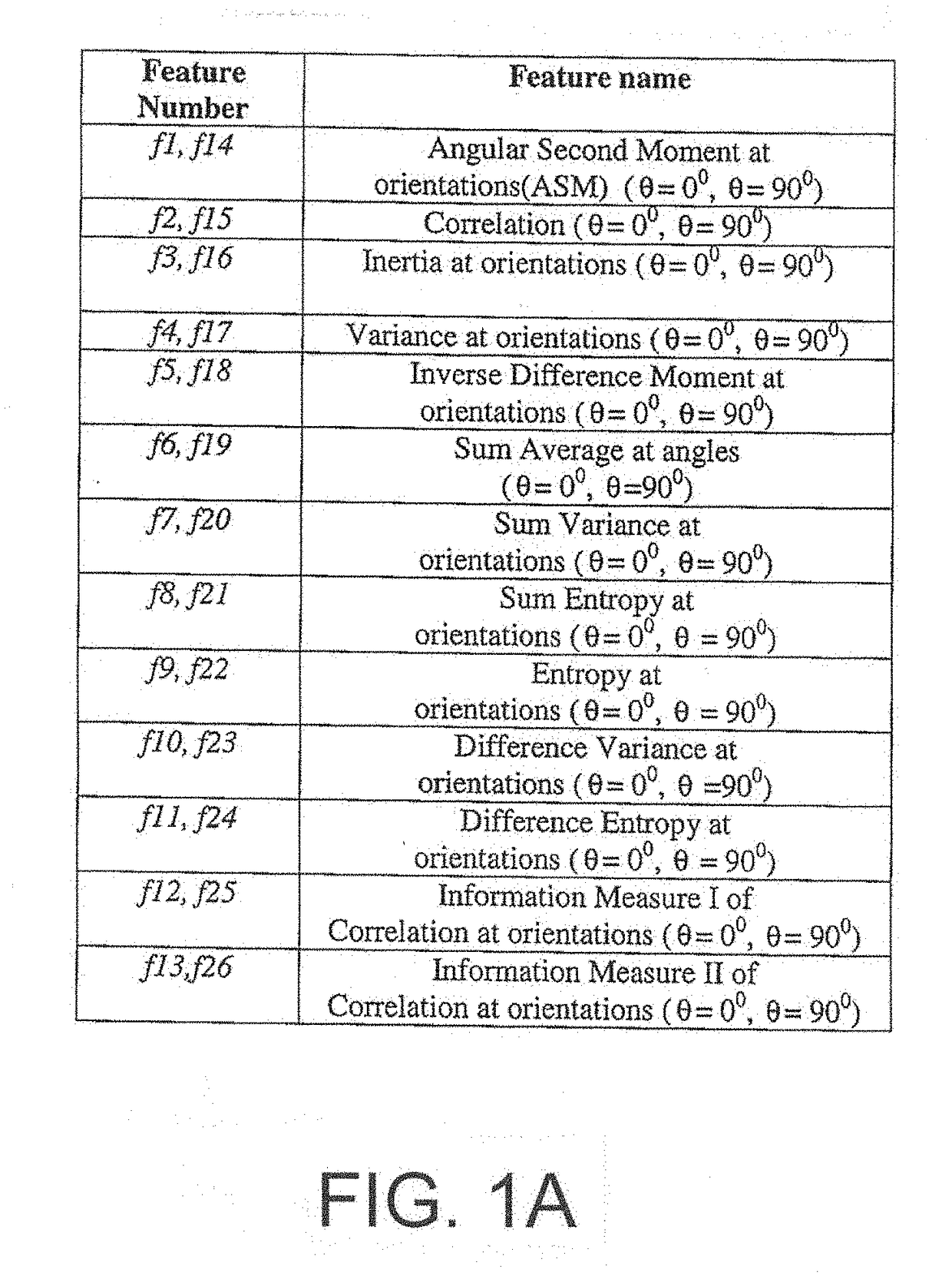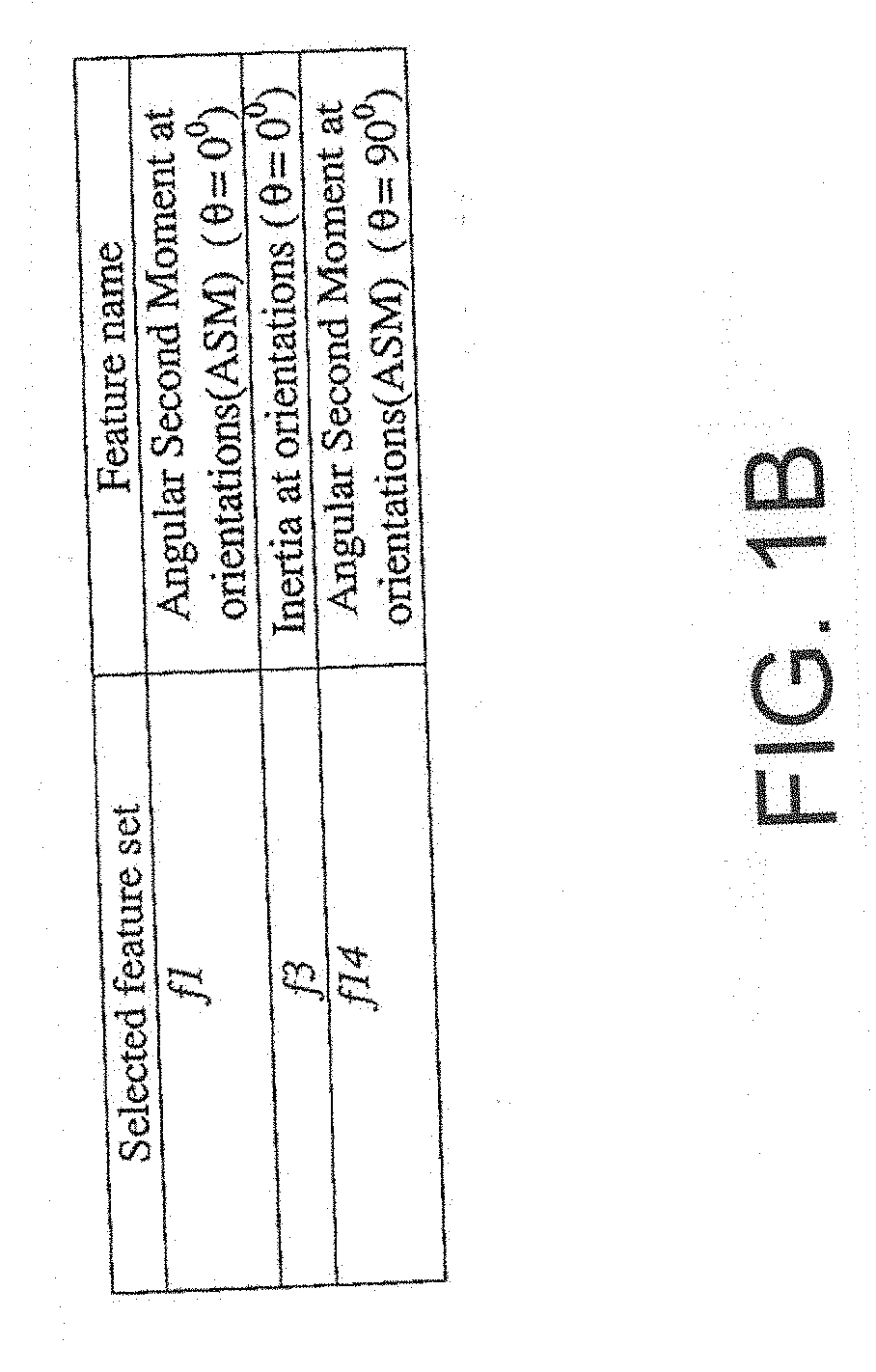Intravascular Plaque Detection in OCT Images
a plaque detection and image technology, applied in image enhancement, instruments, catheters, etc., can solve the problems of insufficient pixels in small windows, difficult to identify which specific textural image characteristic is represented by each of these features, and limited computational complexity of our plaque detection method, so as to reduce the number, reduce processing time, and achieve the effect of sufficient calculation speed
- Summary
- Abstract
- Description
- Claims
- Application Information
AI Technical Summary
Benefits of technology
Problems solved by technology
Method used
Image
Examples
Embodiment Construction
[0212]In this work, we obtained vascular tissue samples with atherosclerotic plaque from myocardial infarction prone Watanabe heritable hyperlipidemic rabbits (WHHL rabbits) [16, 17]. Arterial samples were obtained from different locations from three WHHL rabbits aged 10 and 22 months. Arterial segments of tissue starting from the ascending aorta to the external iliac artery were excised from all specimens and subdivided into 20-30 mm long sections. Digital photographs of the luminal surface were taken, and regions of interest were identified prior to measurements. Histology images with oil red O staining were also captured using a Zeiss Axio Observer ZI system (NRC-IBD, Winnipeg, Canada). The oil red O staining emphasizes the lipid content of the tissue, thereby identifying the plaque region. This study was approved by the local animal care committee at the Institute for Biodiagnostics, National Research Council Canada.
[0213]The OCT system used in this work is a catheter based intr...
PUM
 Login to View More
Login to View More Abstract
Description
Claims
Application Information
 Login to View More
Login to View More - R&D
- Intellectual Property
- Life Sciences
- Materials
- Tech Scout
- Unparalleled Data Quality
- Higher Quality Content
- 60% Fewer Hallucinations
Browse by: Latest US Patents, China's latest patents, Technical Efficacy Thesaurus, Application Domain, Technology Topic, Popular Technical Reports.
© 2025 PatSnap. All rights reserved.Legal|Privacy policy|Modern Slavery Act Transparency Statement|Sitemap|About US| Contact US: help@patsnap.com



